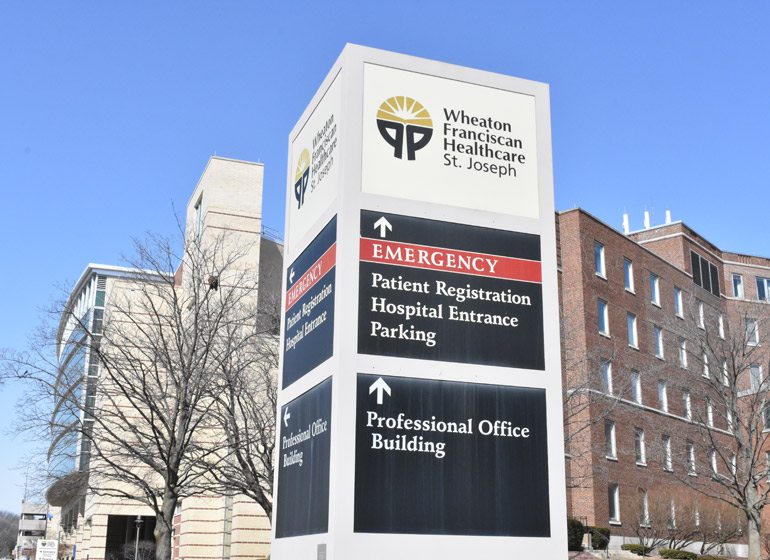Ascension Wisconsin officials unveiled plans Thursday to scale back services at the Wheaton Franciscan-St. Joseph Campus in Milwaukee to realize cost efficiencies while also repositioning the facility as a “community anchor” on the city’s north side.

Surgical and inpatient stays will no longer be offered at the St. Joseph hospital campus and patients in need of those services will be referred to another facility within the Ascension Wisconsin system or outside of it, said Bernie Sherry, senior vice president and ministry market executive for Ascension Wisconsin.
Remaining services at the campus, located at 5000 W. Chambers St., will include its emergency department, as well as obstetrics and gynecology, Neonatal Intensive Care Unit, observation beds and its primary care clinic, Sherry told employees in a memo Thursday.
The move comes after 18 months of evaluating how to move to a more clinically integrated system, Sherry said. Ascension Wisconsin was formed in 2016, born out of the integration of Columbia St. Mary’s, Ministry Health Care and Wheaton Franciscan Healthcare.
“As health care trends change across the country, things are moving away from everything being done in individual hospitals to how do you best deliver health care more effectively within a clinically integrated system,” he said.
Ascension leaders determined that St. Joseph provides three essential services in its neighborhood and within the Ascension system: its emergency department, which sees about 70,000 visits annually; OB/GYN and neonatal services, which see about 2,200 baby deliveries annually; and primary care services.
“We said, ‘What’s critical to be provided as close to the neighborhood as possible, knowing that there are access points in Ascension and other community providers?’” Sherry said.
Sherry said patients will still have “ample” access to other medical facilities. Ascension Columbia St. Mary’s Milwaukee, Froedtert Hospital and Aurora Sinai Medical Center are all within four to five miles of the St. Joseph campus.
The transition of eliminating surgical and inpatient medical services from the campus is already underway, and will be completed by July 1. Ascension will work with employees to help transition them to other positions within the health system, Sherry said. Ascension currently has about 500 open positions with the Milwaukee area, with a particular need for nurses, Sherry said.
The second phase of the plan will involve working with community partners to provide “complementary social and community services” aimed at preventative care and addressing social determinants of health – factors such as employment, education and employment. The freed-up space at the campus would be leased to other organizations and partners, which could be related to education, housing and workforce development.
“We think we can have a greater degree of impact in that area by partnering with others,” Sherry said. “It’s the perfect location for other partners to come in and provide needed services in that area and neighborhood.”
The remaining services at the St. Joseph campus will cost about $150 million annually, Sherry said.
Sherry said the consolidation of lower-volume services at other facilities will help to minimize the losses St. Joseph Hospital has seen in recent years. The hospital posted an operating loss of about $20 million in 2016, according to the most recently available data from the Wisconsin Hospital Association. It reported total revenues of about $230.5 million that year and expenses of $250.5 million.
The hospital serves high volumes of patients that aren’t covered by commercial insurance. About 80 percent of its patients are covered by Medicare or Medicaid, which reimburse hospitals at less than cost. About 5 percent of St. Joseph’s patients are uninsured.
“By moving services to our other facilities, it will lessen the losses there,” Sherry said. “However by staying in that community, we’ll still absorb significant losses just based on the payer mix. That ties in with our mission. The easy thing would be to leave the neighborhood, but we’re committed with the key services there.”


